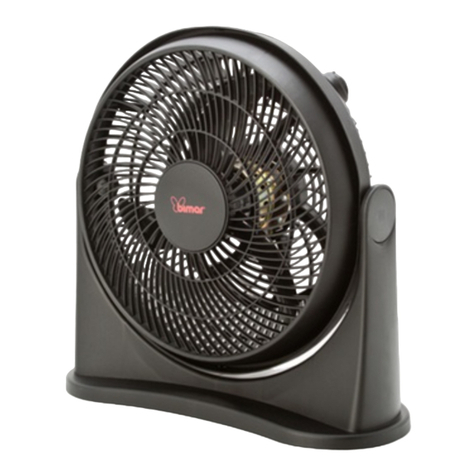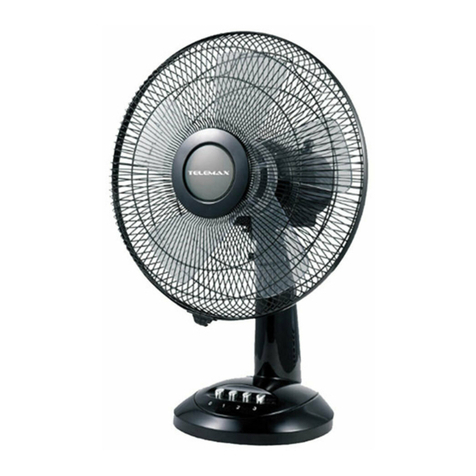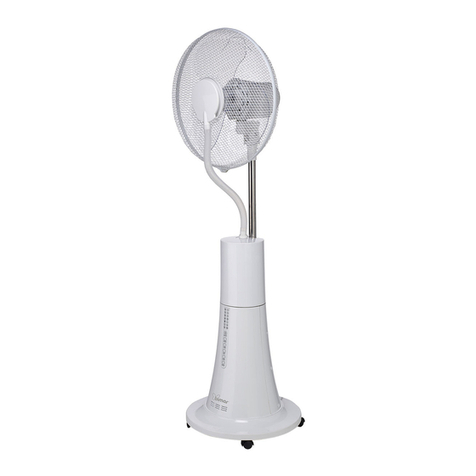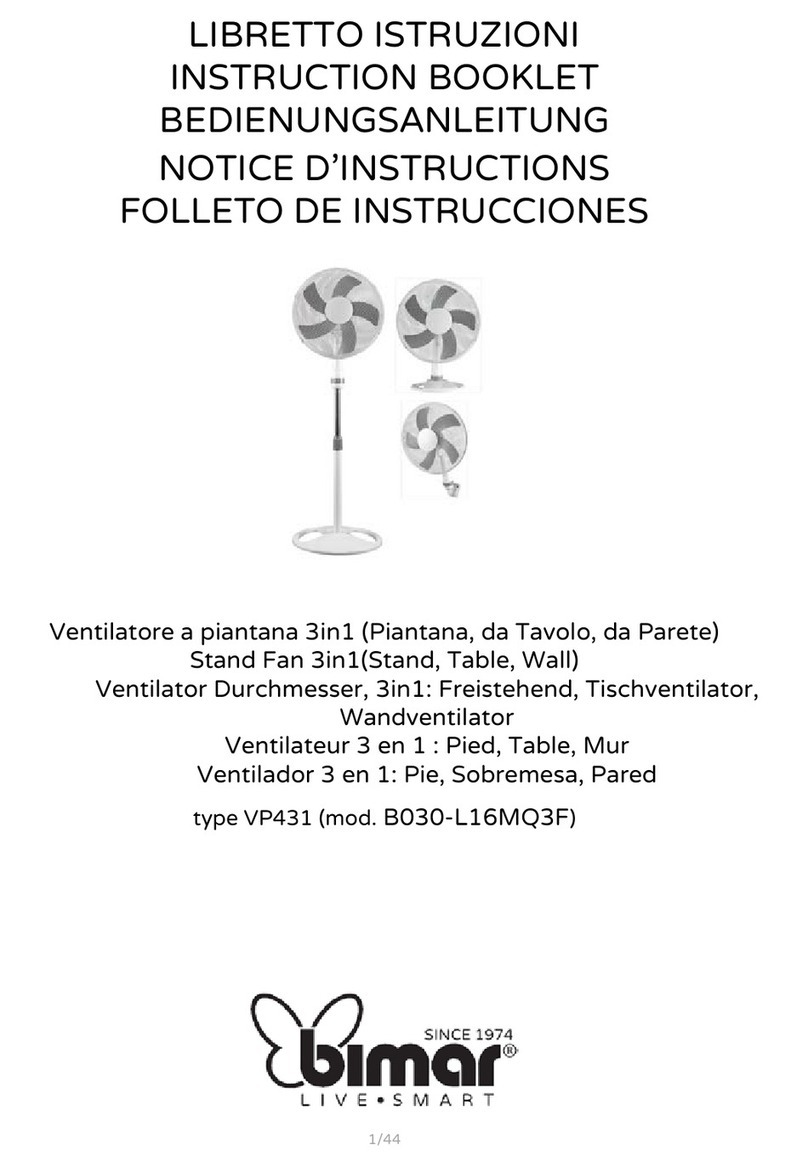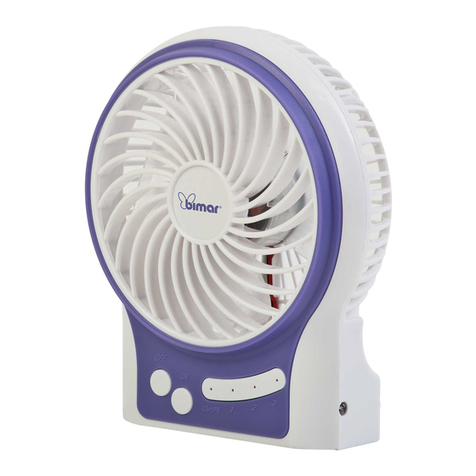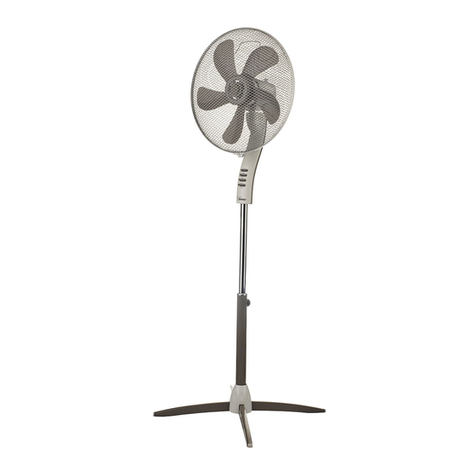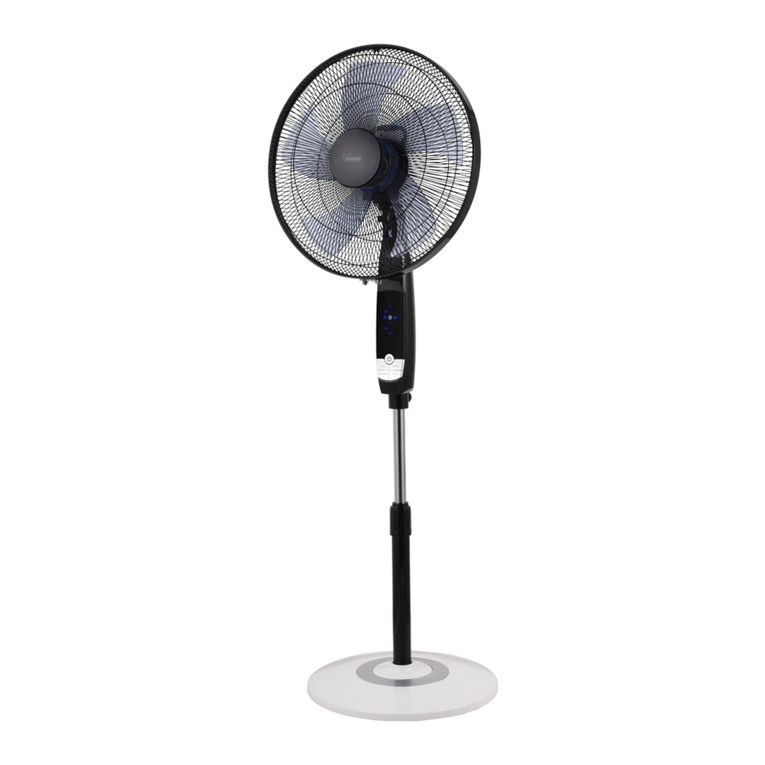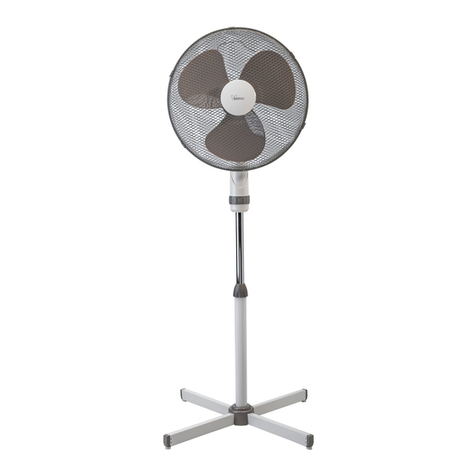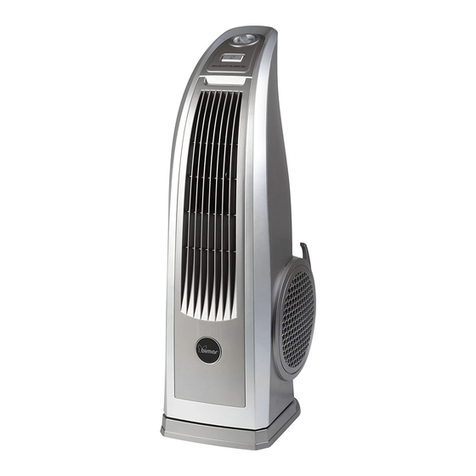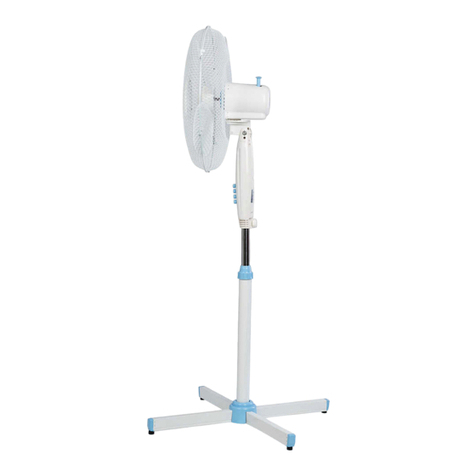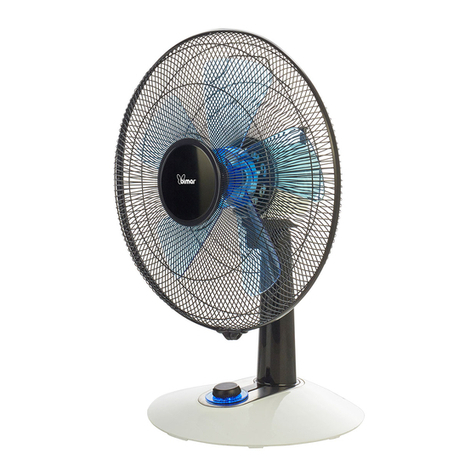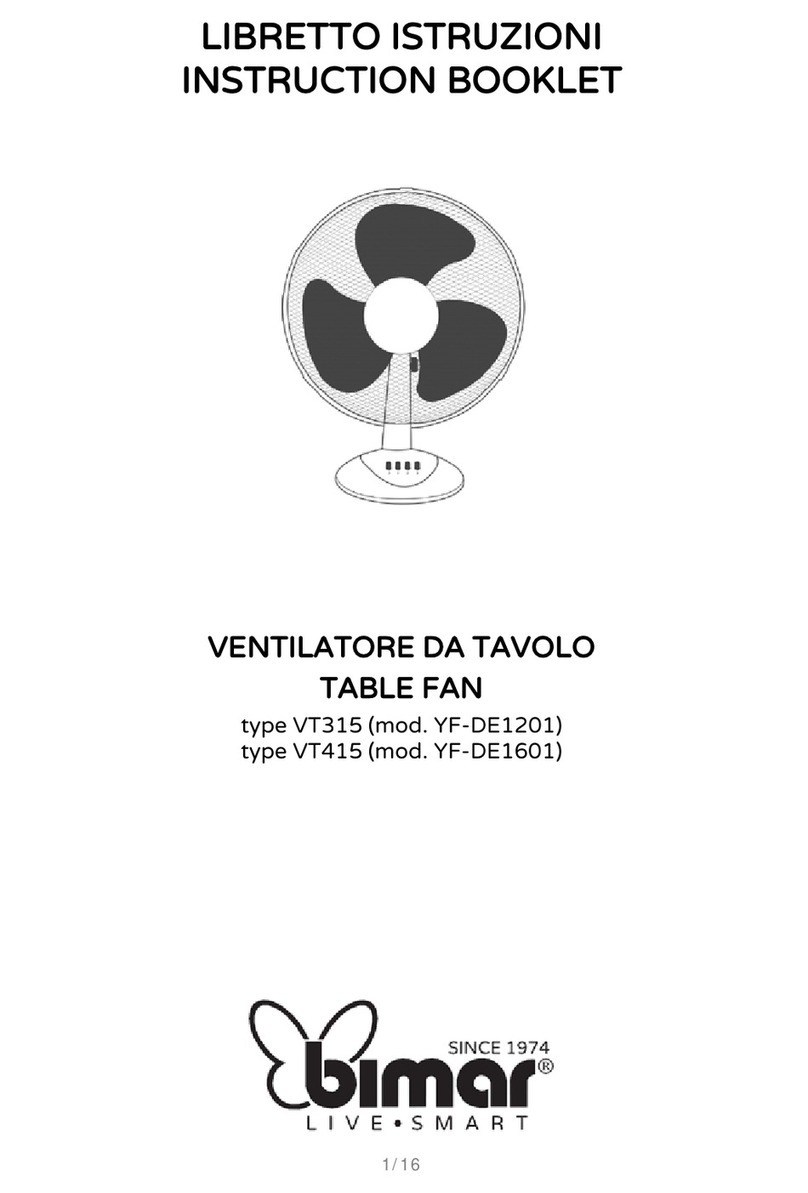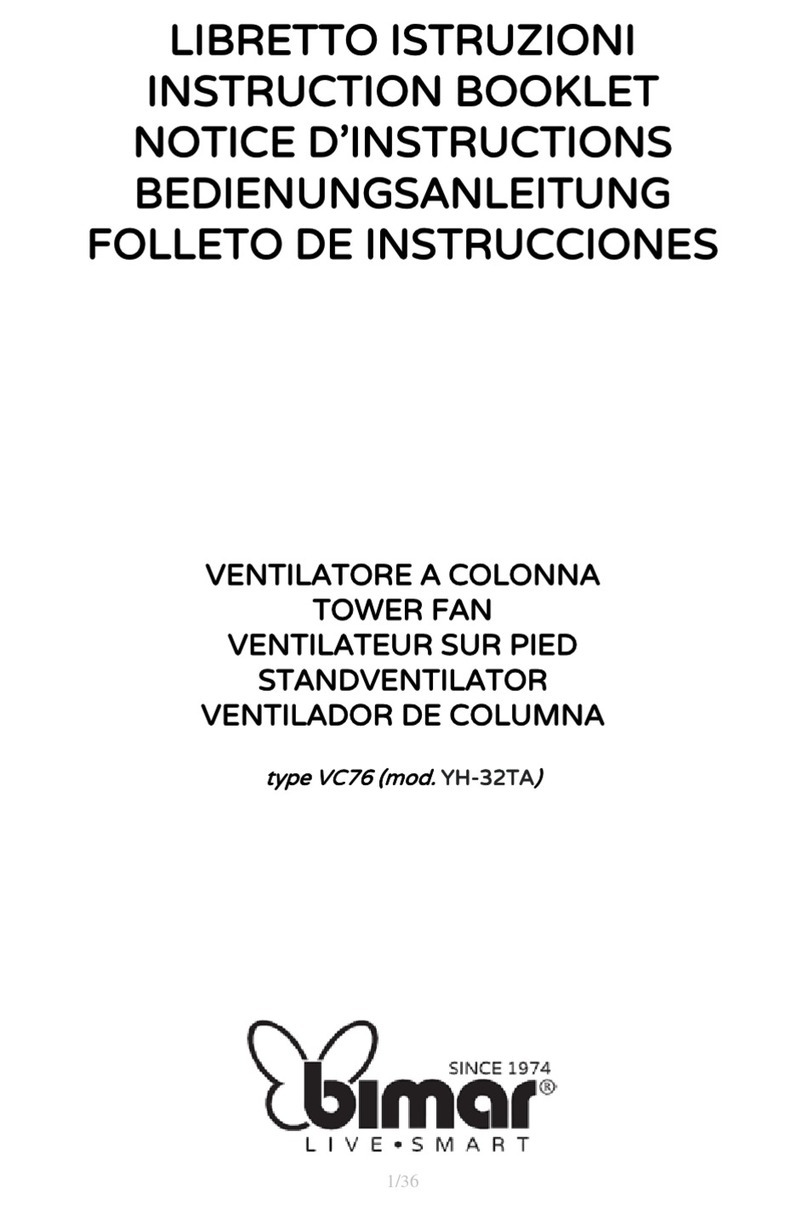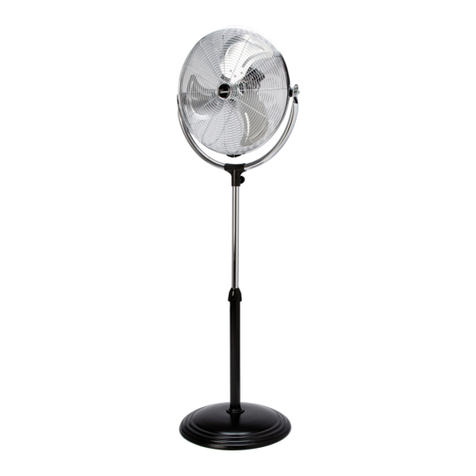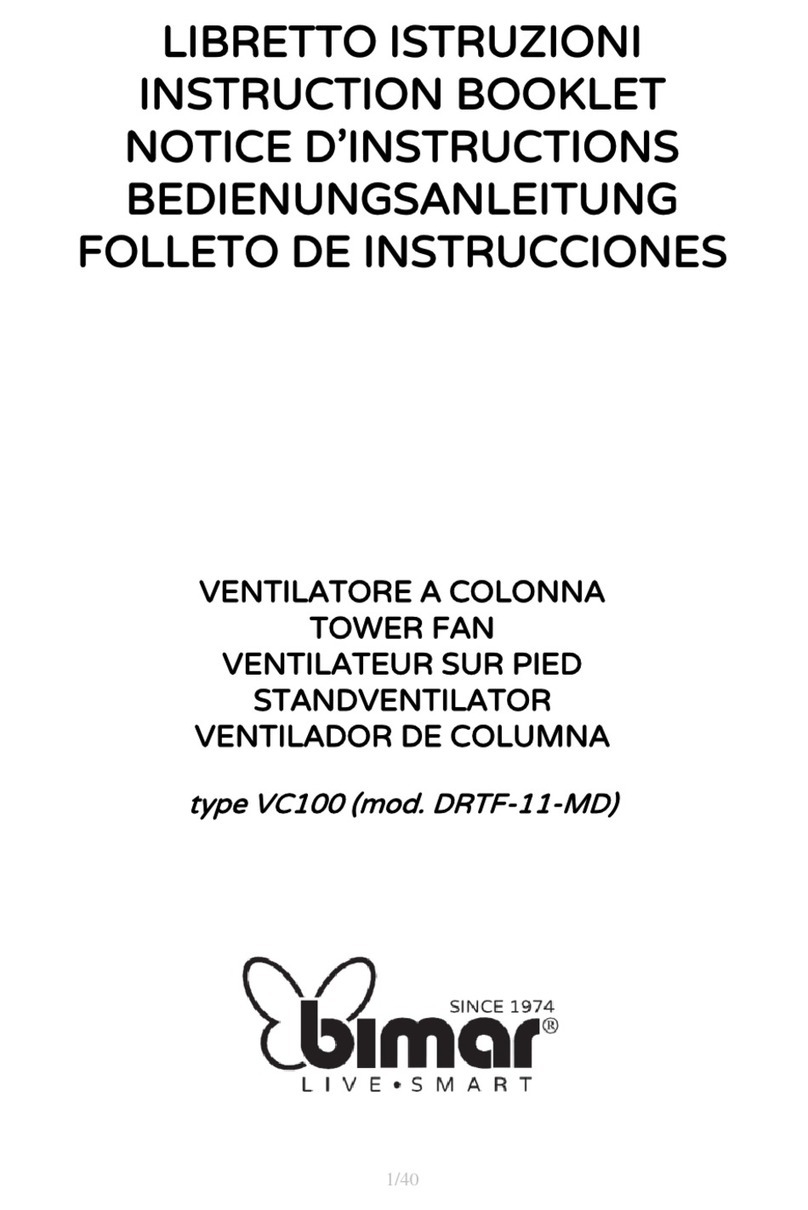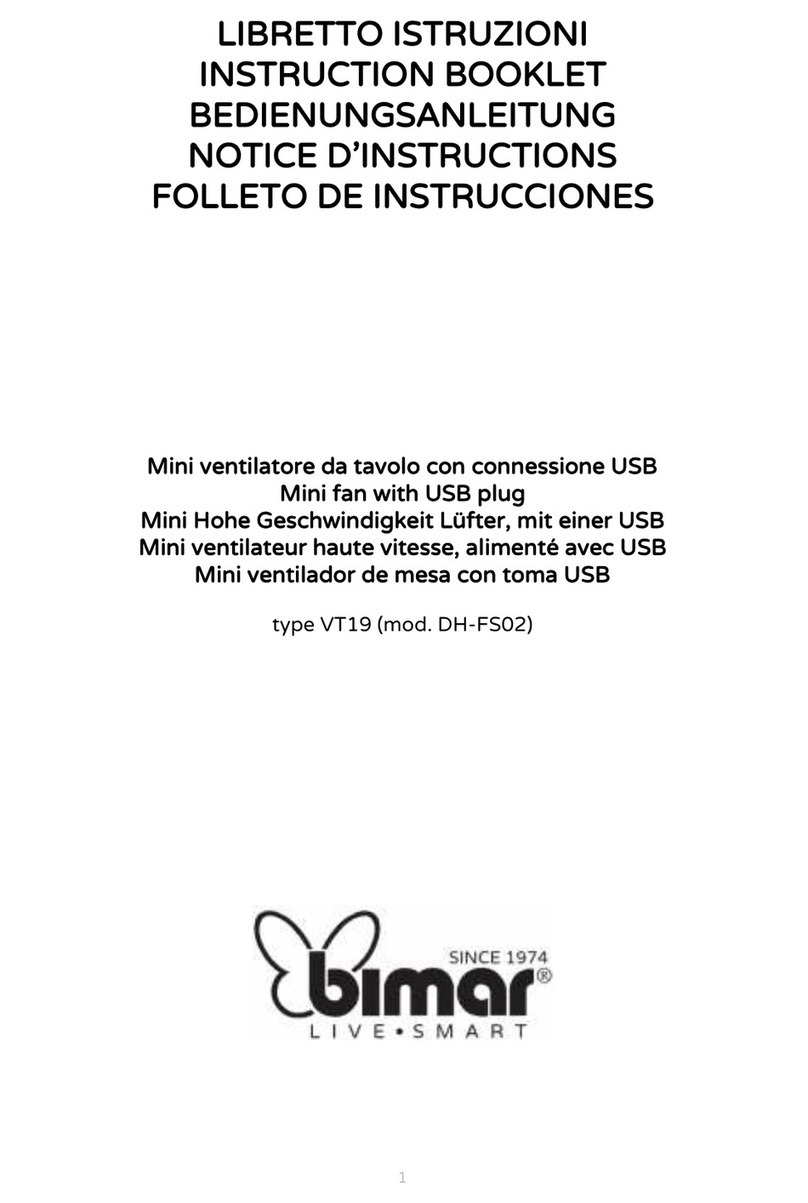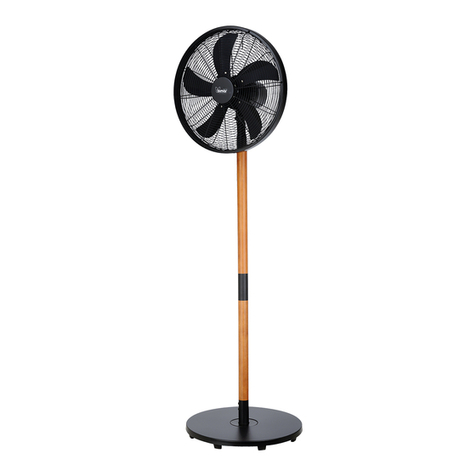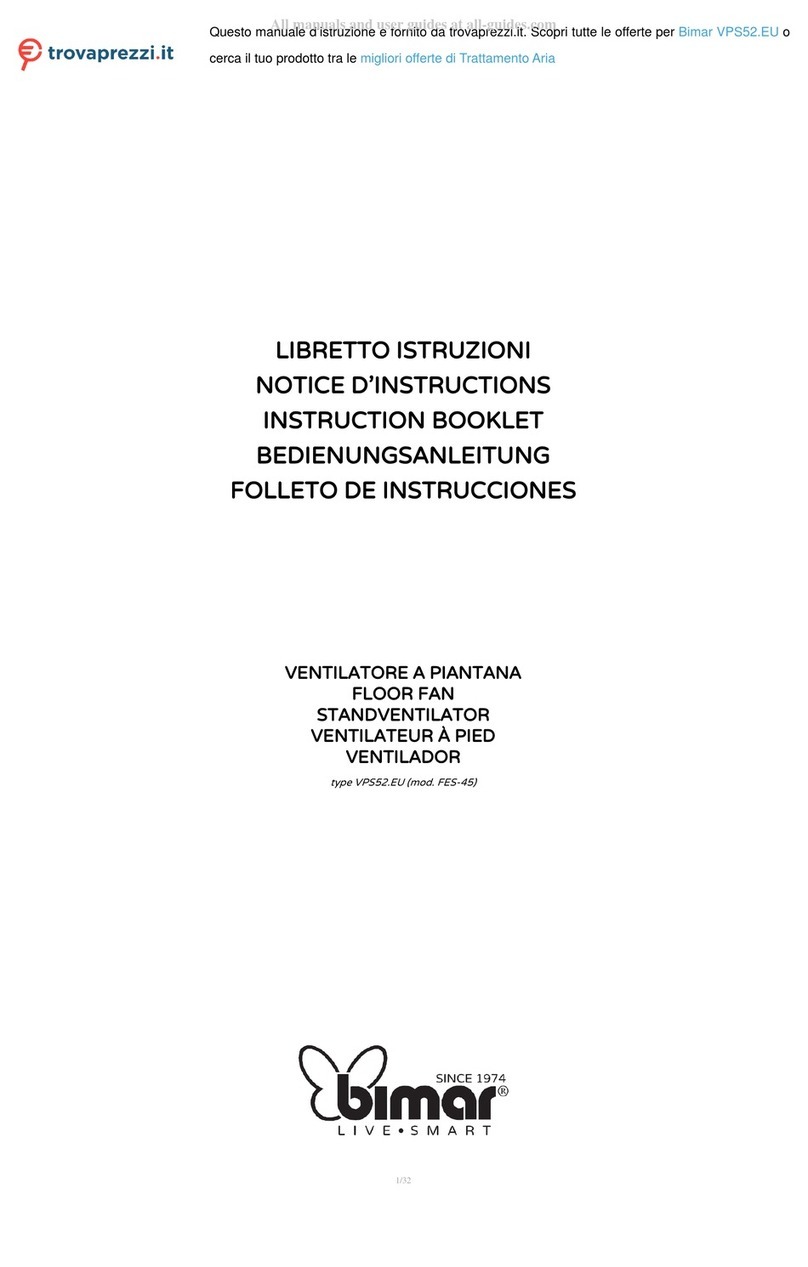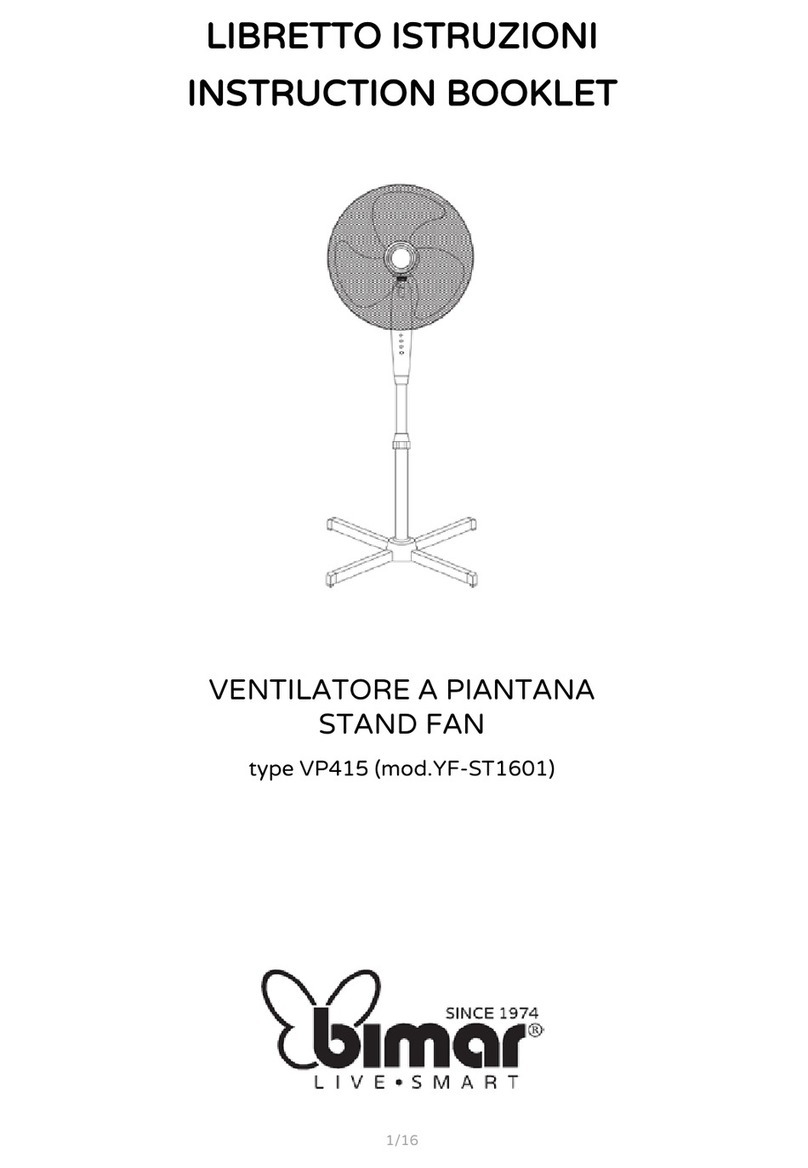
5
•Assicurarsi che il ventilatore sia scollegato dalla rete di
alimentazione prima di togliere lo schermo di protezione.
•Non sovraccaricare (un ciclo di carica troppo lungo, maggiore di 4 ore) o scaricare
eccessivamente la batteria, questo potrebbe danneggiare la batteria riducendola la
durata.
•Assicurarsi che le batterie non raggiungano temperature superiori a 50°C, o inferiori
a 10°C per un lungo periodo di tempo.
•Rica ricaricare l’apparecchio in un ambiente interno (temperatura ideale: 20-25°C).
•Non ricaricare l’apparecchio esposto agli agenti atmosferici (sole, pioggia, ecc.) o in
ambienti umidi e bagnati.
•Posizionare il l’apparecchio durante la ricarica lontano da altre fonti di calore, da
materiali infiammabili (tende, tappezzerie, ecc.), da gas infiammabili o materiale
esplosivo (bombolette spray). Verificare che lo spazio libero sia di 50cm dalla parte
frontale, posteriore e 50cm ai lati.
•Assicurarsi che la batteria sia caricata ad intervalli regolari, anche se non si utilizza
l’apparecchio per un lungo periodo. Questo serve a prevenire danni alla batteria
causati da una bassa tensione per un periodo prolungato.
•Se il l’apparecchio non viene utilizzato con continuità, si prega di ricaricare la
batteria almeno una volta ogni tre mesi.
•La batteria completamente carica si esaurirà anche se il l’apparecchio non viene
utilizzato per un certo periodo di tempo.
•La durata della batteria dipende da vari fattori di tipo ambientale,
d’immagazzinamento e d’uso.
•Se il caricabatterie non è in funzione togliere la spina dalla presa di corrente.
•Non toccare il carica batterie con mani o piedi bagnati.
•Non tirare il cavo di alimentazione per disinserire la spina dalla presa di corrente del
caricabatteria.
•Non tirare il cavo del caricabatteria per spostare il l’apparecchio.
•Non caricare la batteria ed utilizzare l’apparecchio se la batteria inizia a emettere
odori, si surriscalda o inizia a perdere liquido. Non toccare alcuna sostanza che perde,
né respirare i fumi emessi. Consultare immediatamente un medico se si è esposti a
qualsiasi sostanza emessa dalla batteria. Il costruttore non potrà essere ritenuto
responsabile di eventuali danni derivanti da uso improprio (come smontaggio della
batteria), erroneo e irresponsabile e/o da riparazioni effettuate da personale non
qualificato.
•Durante la carica della batteria dell’apparecchio, controllate che non venga in
contatto con l’acqua o altri liquidi. Nel caso dovesse inavvertitamente bagnarsi o
immergersi in un liquido, per prima cosa disattivare la presa di corrente spegnendo
l’interruttore del quadro elettrico, e solo dopo togliere la spina dalla presa di corrente.
Asciugarlo con cura sia spina che la presa di corrente e solo dopo riattivare la
corrente alla presa. Re-inserire la spina nella presa di corrente, e poi utilizzare
l’apparecchio. In caso di dubbio, rivolgersi a personale professionalmente qualificato.






